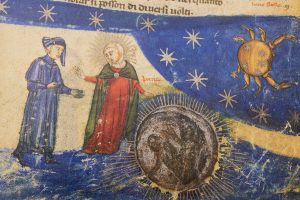Illuminating Dante in Trecento Italy
Early illuminated manuscripts of the Divine Comedy exhibit a diverse array of formats. In this article, art historian Elizabeth C. Teviotdale presents five notable examples from the fourteenth century to illustrate the various methodologies employed by book artists in their interpretations of the poem.











